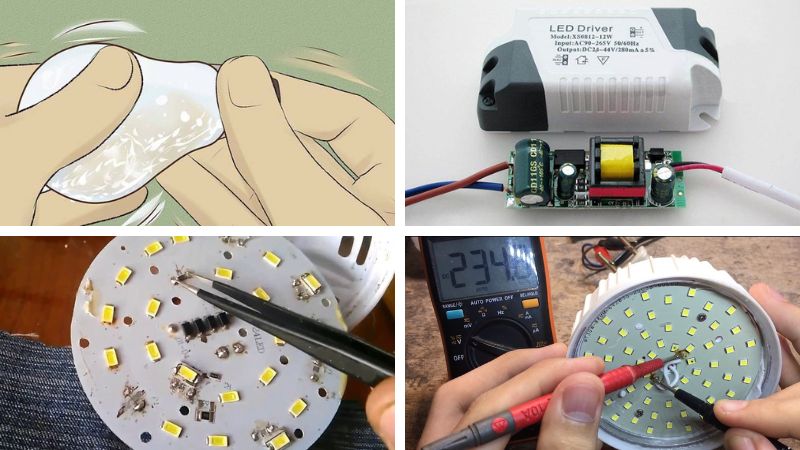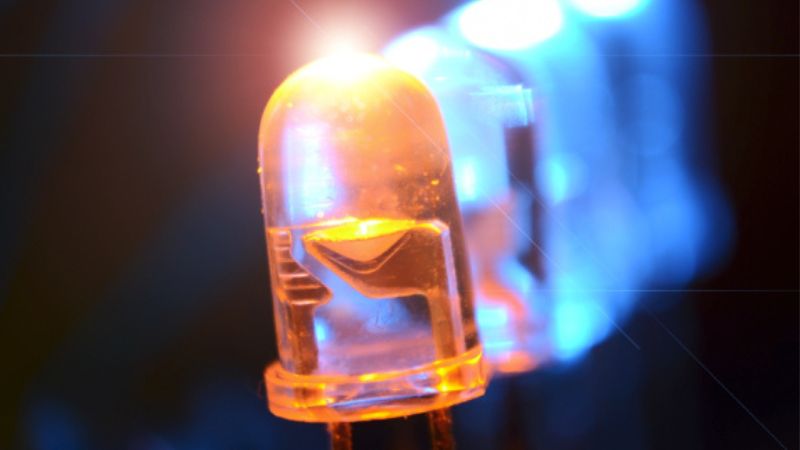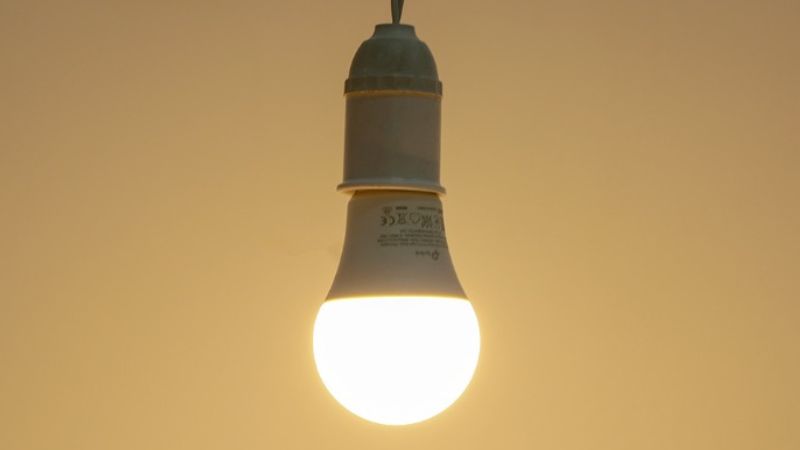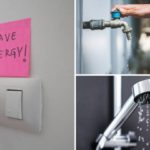LED lights are an essential component in the daily lives of households. LED bulbs offer a long lifespan, energy efficiency, and are free from emitting ultraviolet rays. In addition to providing lighting, LED lights can also be used for decorative purposes and in agricultural settings. However, you may encounter some issues when using LED lights and may be unsure about how to resolve them. In this article, we will explore various solutions to common LED light problems.
1. How to fix LED lights at home
How to fix LED lights that are not working
In the rare case that LED lights are not working, the issue may be an inactive power supply or a burnt-out bulb. To address this problem, follow these steps:
Step 1: Remove the bulb from the lamp socket.
Step 2: Check the functionality of the power supply driver. If it’s still working, the problem may lie in a broken or disconnected wire or a faulty LED chip. If the issue is with the power supply driver, replace it with a different one to power the bulb.
Step 3: If a set of LED lights is not working, inspect each bulb for any abnormalities. A blackened LED bulb with carbon deposits indicates it is burnt and cannot be used anymore. A faulty LED light can cause the entire set of lights to malfunction, so it’s important to thoroughly check each one (since the LED light circuit is connected in parallel to 3 clusters).
Step 4: If a faulty LED light is identified, solder the two pins of the LED light together to bypass the 3-cluster lighting (use copper wire and a soldering iron for this connection).
Step 5: Reconnect the power to check if the LED light is functioning again. If the bulb still doesn’t work, go back and recheck the previous steps.
 Image: How to fix LED lights not working
Image: How to fix LED lights not working
How to fix flickering LED bulbs
The solutions for addressing flickering LED bulbs differ depending on the cause:
- Unstable power supply: In this case, using a stabilizer to convert the 220V power supply into a stable DC current that can better handle the bulb’s power output is recommended.
- Poor quality or faulty power supply driver: If the LED bulb’s power supply driver is malfunctioning and unstable, replace it with a higher-quality driver or a new LED bulb.
- Poor quality heat sink: Ineffectiveness of the heat sink can lead to LED light flickering. Consider replacing or improving the heat sink for better LED light performance.
Image: How to fix flickering LED bulbs
How to fix LED lights with faulty diodes
When dealing with an LED light that has a faulty diode, follow these steps:
Step 1: Use a sharp screwdriver to remove the screw on the light casing.
Step 2: Use a soldering iron and soldering wick to disconnect the connections on the faulty diode (be careful not to let the soldering iron touch other parts).
Step 3: Replace the faulty diode with a new one and solder it onto the circuit board.
 Image: How to fix LED lights with faulty diodes
Image: How to fix LED lights with faulty diodes
How to fix LED lights with faulty chips
If the LED light has a faulty chip, it is necessary to replace it with a new chip to restore normal functionality. However, chip replacement requires professional skills, so it’s recommended to contact a repairman to avoid damaging other devices.
 Image: How to fix LED lights with faulty chips
Image: How to fix LED lights with faulty chips
2. Tips for using LED lights
When purchasing LED lights, ensure that they are sourced from reputable retailers. Pay attention to the expiration date and the brand’s reputation. Additionally, consider proper installation to maximize energy savings.
 Image: Tips for using LED lights
Image: Tips for using LED lights
The information provided above contains effective methods for repairing LED lights at home in a simple manner. It is advisable to save this information for future reference when in need of LED light repairs.







































